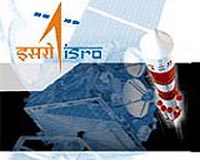 |
Waco TX (SPX) May 12, 2009 With the new movie 'Star Trek' opening in theaters across the nation, one thing movie goers will undoubtedly see is the Starship Enterprise racing across the galaxy at the speed of light. But can traveling at warp speed ever become a reality? Two Baylor University physicists believe they have an idea that can turn traveling at the speed of light from science fiction to science, and their idea does not break any laws of physics. Dr. Gerald Cleaver, associate professor of physics at Baylor, and Dr. Richard Obousy, a Baylor post-doctoral student, theorize that by manipulating the space-time dimensions around the spaceship with a massive amount of energy, it would create a "bubble" that could push the ship faster than the speed of light. To create this bubble, the Baylor physicists believe manipulating the 11-dimension would create dark energy. Cleaver said positive dark energy is responsible for speeding up the universe as time moves on, just like it did after the Big Bang, when the universe expanded faster than the speed of light. "Think of it like a surfer riding a wave," said Cleaver, who co-authored the paper with Obousy about the new method. "The ship would be pushed by the bubble and the bubble would be traveling faster than the speed of light." The method is based on the Alcubierre drive, which proposes expanding the fabric of space behind a ship into a bubble and shrinking space-time in front of the ship. The ship would not actually move, rather the ship would sit in between the expanding and shrinking space-time dimensions. Since space would move around the ship, the theory does not violate Einstein's Theory of Relativity, which states that it would take an infinite amount of energy to accelerate an object faster than the speed of light. String theory suggests the universe is made up of multiple dimensions. Height, width and length are three dimensions, and time is the fourth dimension. Scientists believe that there are a total of 10 dimensions, with six other dimensions that we can not yet identify. A new theory, called M-theory, takes string theory one step farther and states that the "strings" actually vibrate in an 11-dimensional space. It is this 11th dimension that the Baylor researchers believe could help propel a ship faster than the speed of light. The Baylor physicists estimate that the amount of energy needed to influence the extra dimensions is equivalent to the entire mass of Jupiter being converted into energy. "That is an enormous amount of energy," Cleaver said. "We are still a very long ways off before we could create something to harness that type of energy." Share This Article With Planet Earth
Related Links Baylor University Space Tourism, Space Transport and Space Exploration News
 ISRO To Launch Re-Usable Rockets Within Next 10 To 15 Years
ISRO To Launch Re-Usable Rockets Within Next 10 To 15 YearsHyderabad, India (PTI) May 12, 2009 Indian Space Research Organisation(ISRO) is working on a plan to launch re-usable rockets within next 10 to 15 years that will take off from the ground to orbit and return just like any aircraft carrying people and payload, said G Madhvan Nair, Chairman of Indian Space Research Organization(ISRO). "ISRO will launch these re-usable rockets within next 10 to 15 years," Nair told reporters on ... read more |
|
| The content herein, unless otherwise known to be public domain, are Copyright 1995-2009 - SpaceDaily. AFP and UPI Wire Stories are copyright Agence France-Presse and United Press International. ESA Portal Reports are copyright European Space Agency. All NASA sourced material is public domain. Additional copyrights may apply in whole or part to other bona fide parties. Advertising does not imply endorsement,agreement or approval of any opinions, statements or information provided by SpaceDaily on any Web page published or hosted by SpaceDaily. Privacy Statement |